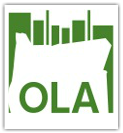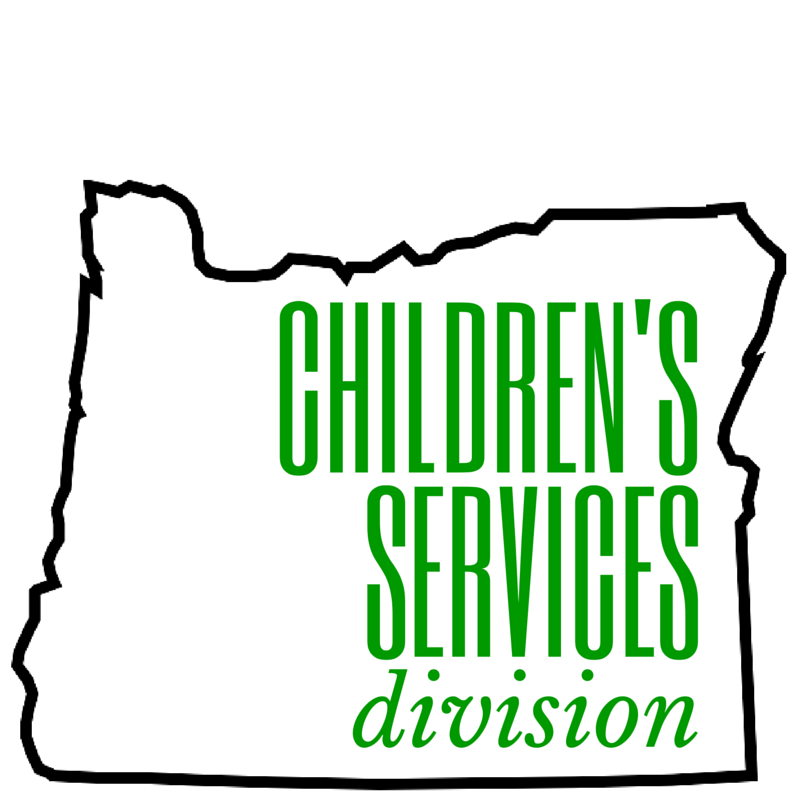Open Positions: September 2024 to August 2025
Looking for more information? Check out our position descriptions. Contact us to join the CSD Board! AuthorJaime Thoreson
0 Comments
Thanks to all who attended our first ever Oregon Presenter and Performer Fair at this year's OLA Conference! It was incredible to see that much talent in one space. I wanted to follow up with some resources for your libraries as you look to book. As a reminder, there are options for programs for all ages!
Please let me know if you have any questions! AuthorAnna Bruce In thinking about how to write a post about attending the PowerUp youth conference, I thought maybe I’d take a hint from our opening keynote speaker and just tell you the story. The story started last summer when I first saw a request for presenters for the conference. I couldn’t believe there was a conference just for Youth Service Librarians! I thought that a conference where all of the sessions would be pertinent to my work sounded awesome, and also like a great venue to publicize Fostering Readers, so I reached out to Holly Campbell-Polivka and we each got preliminary approval from our bosses, and then we submitted our proposal. Fast forward a bit now, and we got approved! I sought a scholarship from the OLA Leadership committee, which was fitting since this is a leadership conference, and attending a national level conference really isn’t in the budget of our small library. Getting that grant made it much easier for me to swing attending. We came to Wisconsin on the first day of spring- a balmy and bright 22 degrees! Madison is a charming place to spend a few days and the conference itself is phenomenal. The opening keynote speaker, Lucia M. Gonzalez, told her story of being a youth services librarian even as she rose to director in her Miami library. She inspired all of us to think of our skills as youth librarians to be skills that can take us far in many directions, while also making it clear that our libraries are the most important place to be. There was a lot of sniffing in the room when she mentioned they are naming a park after her by her old library. Holly and I presented in the first session and we found that the audience was large and attentive. Fostering Readers really struck a chord with a lot of people there! We even got a shout out in a later session that they were going to add the resource to their list of resources that they share for literacy education. The first request for more information hit our inboxes before the next session started! I attended another session later that was presented by the State Youth Services consultant for South Carolina, and she also is intending to start sharing the Fostering Readers site with the librarians she works with! This is the third time we’ve presented a version of this presentation at a conference and definitely the most enthusiastic feedback so far! I think the most valuable session for me was one on a new way to collect program data that integrates practical information like the name of the program and the number in attendance, with the less quantifiable data like what participants did in the program, photos of the event in progress, and quick quotes from participants. It even includes a space for reflection and planning for the next time. It’s not yet available to libraries, but I’m going to keep an eye out for it! We capped off our conference experience by attending a post-conference session about being a Playbrarian and the value of True Play in the library. This was put on by Carissa Christner of Madison Public Library and I found it to be inspiring and attainable. I plan to have a Wild Rumpus series of summer reading events this summer to put what I learned into practice. Overall, I can’t recommend this conference enough. Next year, it will be virtual, so be sure to look out for Power Up 2025, which will be held in February. Here are Holly and I ready to present about Fostering Readers. Fostering Readers on the big screen and ready to roll. This was the view from the conference - right on the lake! (Madison is on an isthmus.) AuthorSusan Cackler There is still time to bid and help us reach our goal of $1000!
AuthorJaime Thoreson 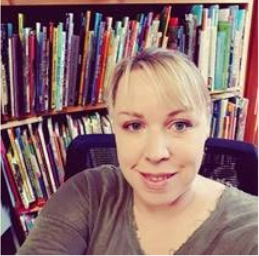 Congratulations to Monica Hoffman, our 2024 Evelyn Sibley Lampman Award recipient for her significant contribution to the children of Oregon as a library worker. The Evelyn Sibley Lampman Award is presented annually by the Children's Services Division and is given in memory of Evelyn Sibley Lampman (1907-1980), noted Oregon teacher, journalist, and author of children’s books. Monica is the Umatilla County Special Library District Early Literacy Program Manager and develops and delivers early literacy programming and training to childcare sites, preschools, parents, and libraries throughout Umatilla County. Since 2014, Monica has been the program director for Take Off! an early literacy outreach program which focuses on reaching families that cannot otherwise reach a public library due to transportation or conflicts with work. Monica has expanded this program to school fairs, back-to-school nights, and now more than 70 sites across the county. She also serves as an encourager and support to library directors, skillfully developing and adapting early learning program services to model inclusive storytimes, hands-on STEAM materials and the building of library storytime kits. She led a Next Level Storytime workshop at the Oregon Library Association Conference in 2023 and helped librarians across the state add inclusive storytime elements to their programming. She is now the chair of the Children's Services Division for the Oregon Library Association. In 2023 Monica provided: 15,565 Books and 813 Storytime kits rotated to childcare sites 371 Storytimes provided to libraries and childcare centers 5,218 children and adults attended programs 1,190 Students enrolled in the Take Off! Program Monica’s contributions over the past 10 years have benefited many lives and made lasting contributions to the children of Oregon. AuthorAmanda Lamb Melissa Pebly, EdD Assistant Professor of Practice, Portland State University, College of Education will be our workshop facilitator. The workshop is on Friday, March 22nd from 1:00-3:00PM on Zoom. The workshop will help attendees become familiar with: how storytime can impact educational outcomes for children with disabilities and diverse learning needs, the principles of Universal Design for Learning, initial strategies to support children with disabilities in storytime, and more. Pre and Post-Session Readings/Websites from Melissa Pebly: 1) Please watch this short video on Universal Design for Learning 2) Some reading to get you ready for our work together: Universal Design for Learning - Theory and Practice Zoom Meeting Link: https://us02web.zoom.us/j/82122450182 Meeting ID: 821 2245 0182
The Oregon Library Association's Children Services Division's Spring Auction 2024 is just a few weeks away. CSD is busily getting everything ready to take your bids starting Saturday, March 23, 2024. If you'd like a preview of the LOTS, use this link: https://www.librarything.com/profile/CSDSpringAuction2024 Be sure to share this info with everyone in your life who might be interested in purchasing books for kids. Most of the LOTS will start out at $2.00 a book --- which is a fantastic deal! If you need books for summer reading giveaways, for your library collection, for your children or grandchildren-- this is a great opportunity to support CSD and provide books to those you care about. AuthorJaime Thorenson Hello,
Just a quick reminder that the deadline for the first round of CSD scholarships to the OLA conference is this Thursday, Feb. 29. If we don't award all the scholarships in the first round, we'll open the application again, but apply now for the best chance of getting a scholarship. The Children's Services Division (CSD) of the Oregon Library Association (OLA) is offering scholarships of up to $1,000 for members of CSD to attend the 2024 OLA Conference in Salem, OR. Funds are intended to cover the cost of registration, hotel lodging for Tuesday night (if attending a pre-conference) and Wednesday and Thursday night for regular conference attendance, travel, and meals. Applicants: -must be a current member of the Children's Services Division of OLA or become a member -can receive one CSD scholarship per year (September-August) Scholarship recipients: -agree to share information with other CSD members in a CSD Board-approved manner such as those outlined below. -complete a short survey upon completion of the conference -are required to pay any extra costs of family members or friends who accompany them to the event -must provide receipts for reimbursement of travel and meal expenses In awarding scholarships, preference is given to: 1. Applicants from diverse cultural/ethnic backgrounds and/or historically marginalized groups, 2. Applicants employed at institutions or in positions serving under-represented groups, 3. Applicants who have not previously been awarded a CSD scholarship, and/or, 4. Applicants employed at small or rural institutions with limited funding. By accepting a scholarship, the recipient agrees to share what they learned with CSD membership in a mutually agreed upon time frame and manner such as presenting at a workshop or conference; writing an article for the OLA Quarterly, Hotline, or CSD blog; coordinating a Mock workshop; becoming a member of the CSD board or other professional development method. The first deadline is February 29, 2024 for notification of award by March 12. Apply now: https://ola.memberclicks.net/csd-2024-ola-conference-scholarship-app If you have questions or comments, please feel free to contact: Jackie Partch, CSD Scholarship Chair - [email protected] Monica Hoffman, CSD Chair - [email protected] Join us for our CSD Spring Workshop: Inclusive Early Literacy We are excited to announce that Melissa Pebly, EdD Assistant Professor of Practice, Portland State University, College of Education will be our workshop facilitator. Her workshop is on Friday, March 22nd from 1:00-3:00PM on Zoom. The workshop will help attendees become familiar with: how storytime can impact educational outcomes for children with disabilities and diverse learning needs, the principles of Universal Design for Learning, initial strategies to support children with disabilities in storytime, and more. Pre and Post-Session Readings/Websites from Melissa Pebly: 1) Please watch this short video on Universal Design for Learning 2) Some reading to get you ready for our work together: Universal Design for Learning - Theory and Practice Zoom Meeting Link: https://us02web.zoom.us/j/82122450182 Meeting ID: 821 2245 0182
AuthorEmily West Many thanks to the Youth Librarians (at heart or in practice) who got together Wednesday to do a thing that brings us joy---talk about great books for kids! Enjoy this list of favorites. Some of the suggestions are great for storytime, some for one-on-one with a youngster, and others are for when you want to curl up in a comfy chair with a warm beverage and just enjoy a great book written for children.
AuthorJaime Thorenson |
OLA Home Don't miss a beat! Stay current with kids-lib, CSD's electronic mailing list.
Archives
May 2024
Categories
All
|
||||||||||||||||||||||
|
Contact Us
Join Children's Services Division! Contact [email protected] for membership information. The purpose of this site is to improve communication among Division members, publicize Division events and activities, introduce new and prospective members to the Division, and to link to useful Internet sites. Bylaws & Award Procedures |

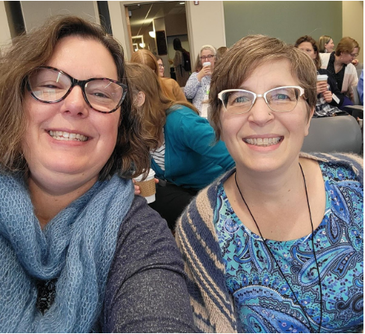
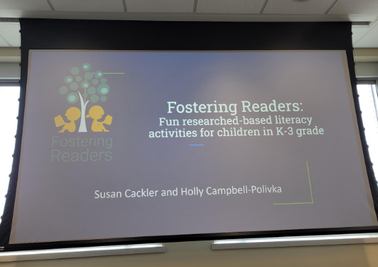
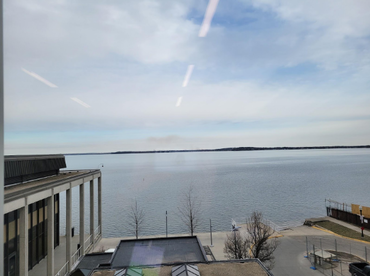
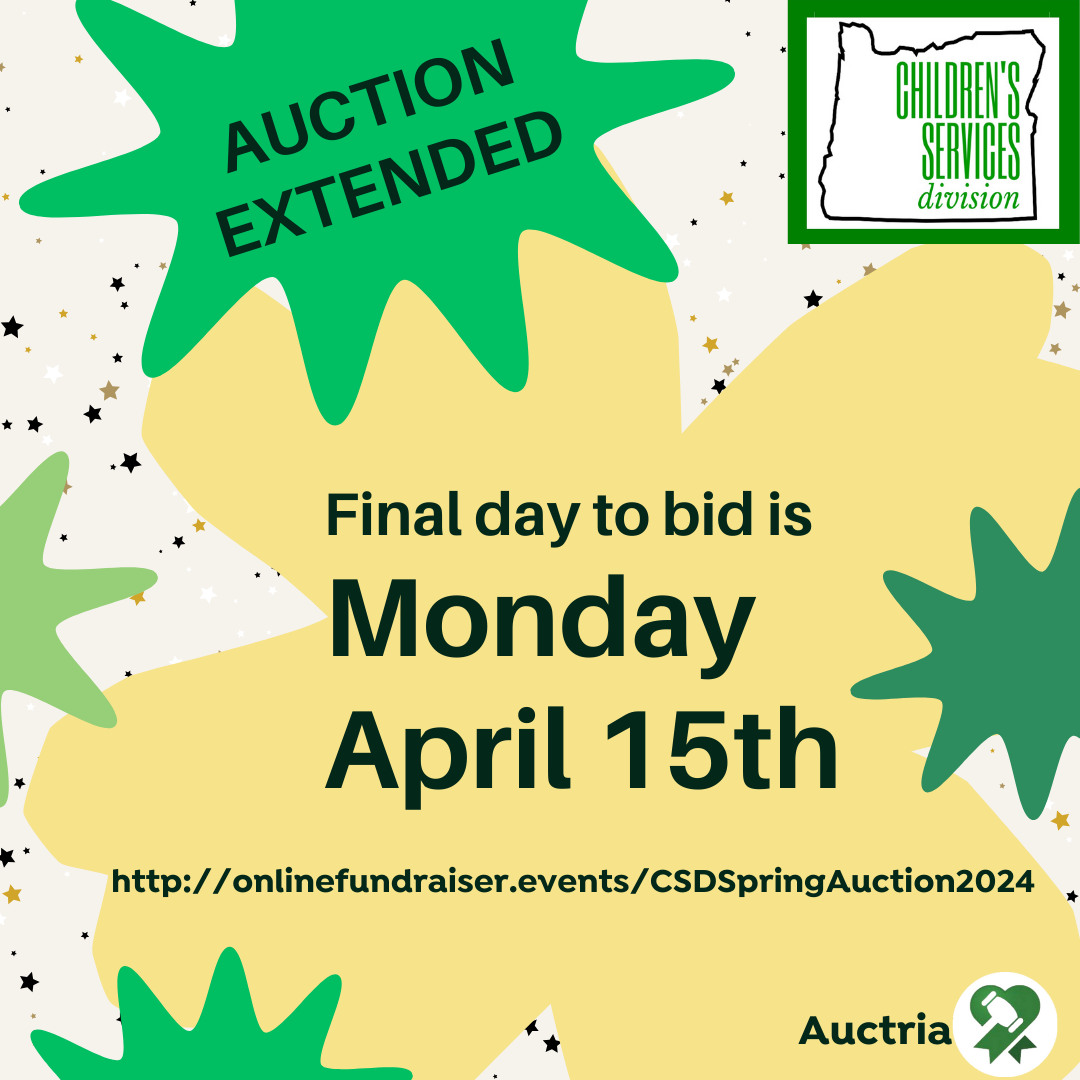
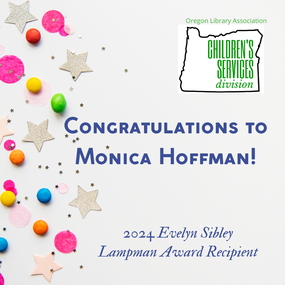
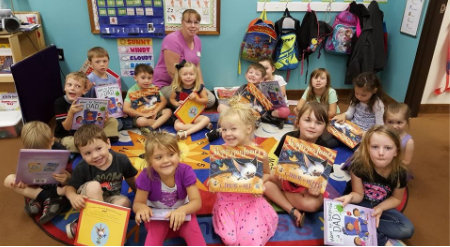
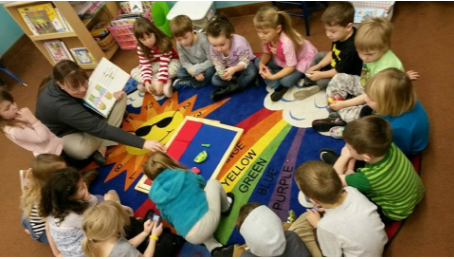
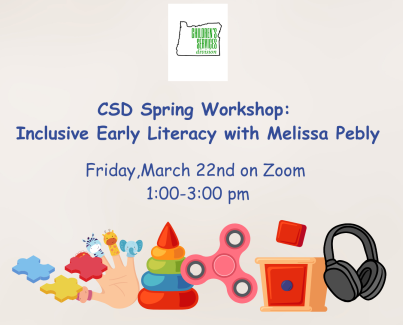
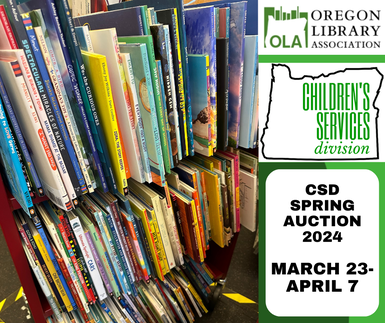
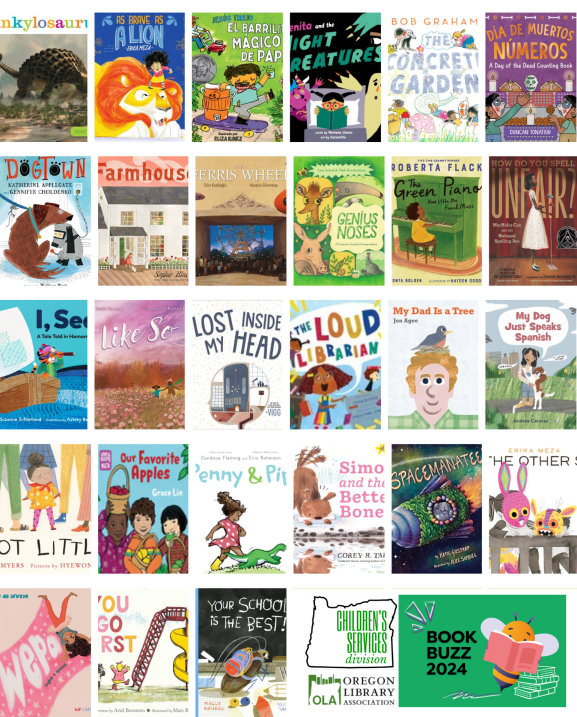
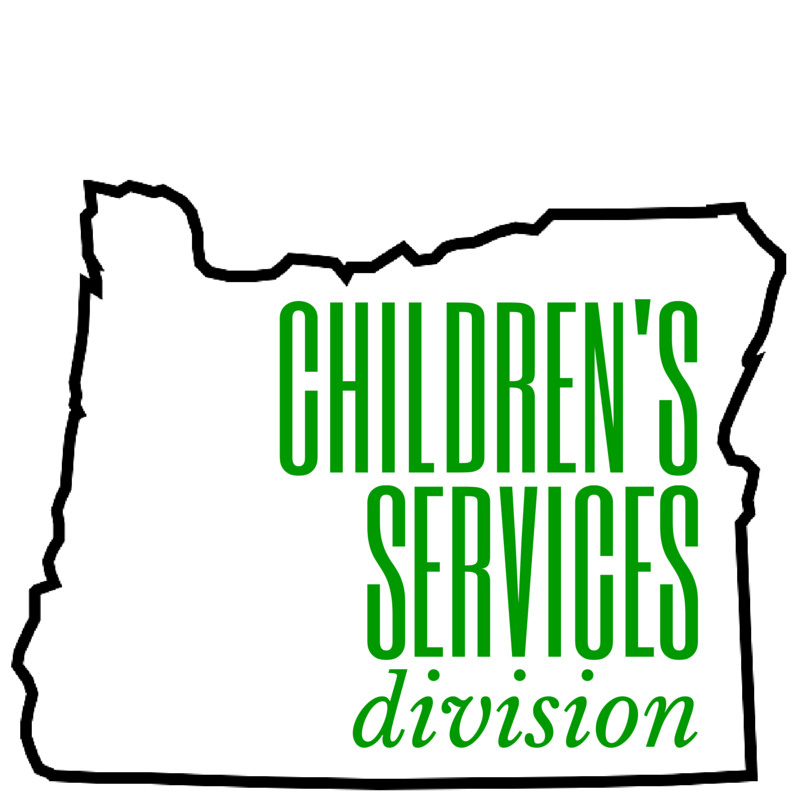
 RSS Feed
RSS Feed
